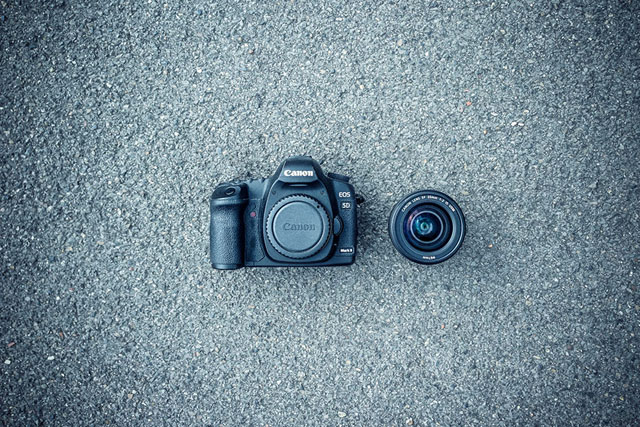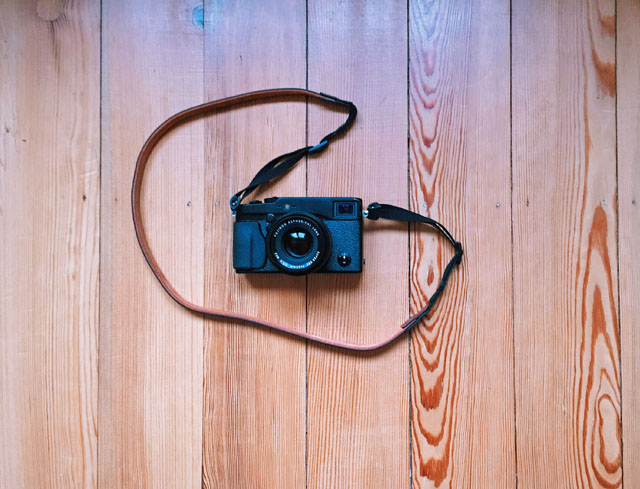Gear Avoidance Syndrome: It Might be Healthy for Your Photography
![]()
GAS, also known as Gear Acquisition Syndrome, is very common among photographers. It simply means that you just can’t get enough new lenses, equipment and upgrade your camera as soon as possible in order to have more options and – according to the seemingly prevalent opinion – become better.
But have you ever thought about the opposite side of this imaginary disease – the Gear Avoidance Syndrome? A syndrome that might even be good for you and your photography. And your wallet.
But why should it be bad to have a lot of gear at your disposal? Isn’t it incredible to have all the gear you want and be able to shoot every photo imaginable? The reasoning behind Gear Avoidance Syndrome is simply what psychologists call “Paralysis By Analysis” or “The Paradox of Choice”.
Analysis Paralysis in this context means that you’re getting so carried away analyzing every aspect of a photographic situation on a technical level that you oversee what it’s truly about. The great range of technical choices distracts from the even bigger choices on a creative level where the magic happens. To keep it short, but reasonable accurate: The more you have, the harder it gets, because the more gear you own, the more you’re trapped in thoughts about this gear.
![]()
Just imagine you’re into street photography and you’re walking around town one day at a time to capture wonderful moments. You carry around a lot of equipment. You’ve got a backpack with all sorts of lenses ranging from wide-angle, prime to tele-zoom with apertures from 1.4 to 4.5 and focal length from 10mm to 300mm. Just name it, you’ve got it all.
To make things even more exciting, you’ve got a second body and a tripod attached to your backpack. Although you are more than happy to be able to have all the options, it still somehow occupies your mind. While looking for great moments, you always check consciously or unconsciously whether your lens is the perfect one for this particular moment. “If only I had the tele-zoom on my cam right now, I could’ve captured that man jumping in the air down the street” might be a thought popping up every now and then. You decide it’s time for the tele-zoom to get moments like these.
With your wide-angle state of mind from the last hours you’re still focused on moments right in front of you. To truly make the most of the tele-zoom, it will take a while to really “think” in tele-zoom. But before you get really comfortable with it, you just want to give the wonderful bokeh of your prime lens a try. After a wonderful day out you’ll certainly have a variety of interesting shots, but have you reached your full potential?
Let’s imagine you don’t even own all that equipment. All you are working with is one body and one lens – that’s it. Everything you own is in your hand, say a decent DSLR or rangefinder with a prime of your choice e.g. 35mm. Wait, wouldn’t a zoom-lens from 18mm to 200mm solve the problem? Not really, because there’s still way too many technicalities involved and the image quality is usually fairly low. Furthermore it wouldn’t challenge you enough to improve your photography.
So yes, all of your beloved options are gone all of a sudden – but so is the agony of choice. There is just this one frame you have. During the first days you’ll certainly miss all that equipment and the different worlds you enter with every lens. But after a while you realize how incredibly unexplored and huge this one world of your new set-up is.
You find yourself thinking about your equipment less and less, because there isn’t much to think about anymore. There’s only one thing you can think about, and that’s what’s happening right in front of you.
The more you use this one lens, the more it will become your lens. You’ll know the good sides and the bad sides, but one thing is certain – you’ll know it better than ever before. Once you’re truly familiar with it, gear won’t play much of a role anymore. All you’ll think about is what your walks are actually about: wonderful moments.
The longer you have Gear Avoidance Syndrome, the more you grow as a photographer. Although there are less options available, you’ll find way more creative ways to capture what you feel! In a way all your technical options before turn into creative solutions with your minimal set-up. You’ve done and seen it all with your 35mm lens? Awesome! Why not sell it and move on to a 18mm or 50mm depending on your interests and style? Let’s explore this world!


Picking up Gear Avoidance Syndrome may not only be healthy for your wallet, but also for your growth as a photographer! Again, having high quality equipment is amazing and Gear Avoidance Syndrome is definitely not meant for everyone. But maybe it may be exactly what you need to remind yourself that you already have the most amazing equipment: your eye, heart and soul!
About the author: Marius Vieth and Martin Dietrich are photographers based in Amsterdam, Netherlands and Frankfurt, Germany, respectively. They are part of the international fine art photography label Neoprime. This article originally appeared here.